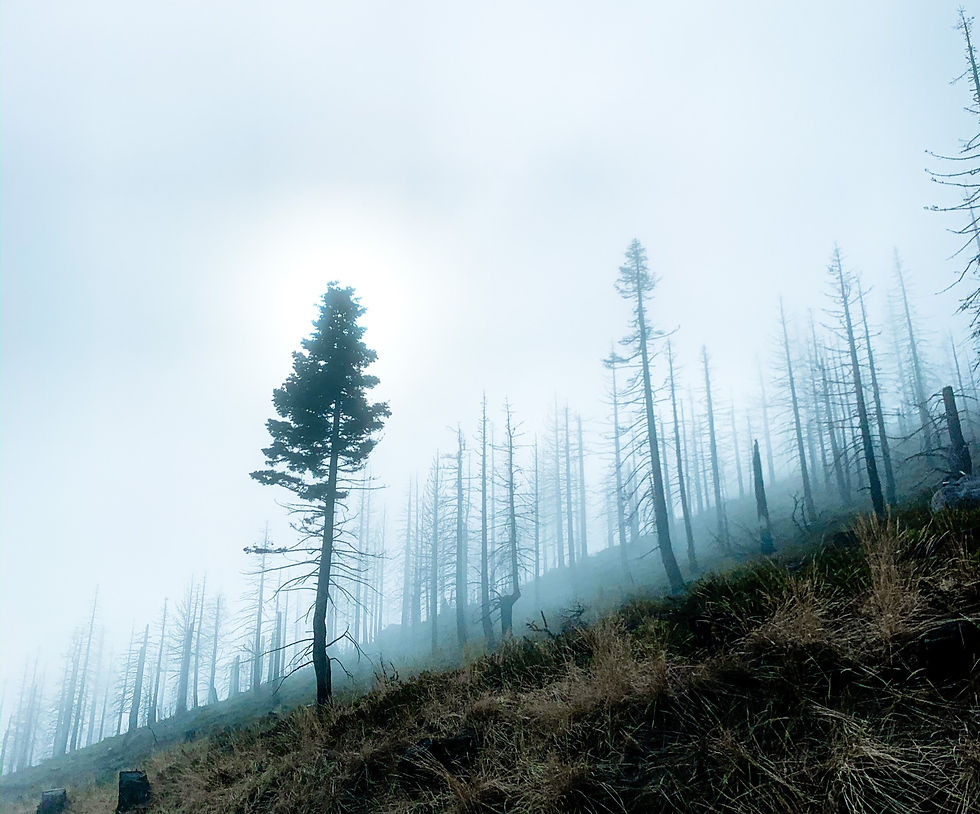California Consumed by Catastrophic Wildfires
- Ellis Jackson
- Aug 31, 2020
- 3 min read
Kate Byng-Hall reports as vicious wildfires tear through the state of California, making thousands homeless.

Photo by Meritt Thomas
Over the past month, 1.4 million acres – 1200 square miles – of land in California has been consumed by devastating wildfires. Tens of thousands of people have been evacuated from their homes as hundreds of buildings and houses are destroyed. Seven people so far have lost their life.
In mid-August, a series of dry thunderstorms hit the state, causing approximately 12,000 lightning strikes across the area, starting 585 separate fires in quick succession. The nature of the storms means there has been minimal rain to help extinguish the blazes, and strong winds have quickened their spread. Much of the fire is tearing through steep and inaccessible terrain, making stopping the spread of the flames all the more difficult.
We are a start up charity. You can support us with our mission to help people #stayinformed by joining us today from just £1pm.
Disaster in Unprecedented Times
The National Weather Service has stated that “warm temperatures, very low humidities, and stronger winds are expected to combine to produce an increased risk of fire danger”. These conditions have combined to facilitate huge blazes – LNU Lightning Complex Fire and SCU Lightning Complex Fire have burned roughly 691,000 acres between them, becoming the second and third largest fires ever in the state.
Indeed, earlier in the month the highest temperate ever on Earth may have been recorded in Death Valley National Park, California, as thermometers clocked an astonishing 130°F (54.4°C). This staggering heat would have certainly added to the risk of fires in the region.
Covid-19 has also affected how the emergency services have been able to respond to the crisis. Usually, there is a scheme in America whereby prisoners from jails can be called upon to become ‘inmate firefighters’ during wildfires to assist regular fire services, but this has been impossible this year due to the early-release scheme brought in because of coronavirus.
13,000 firefighters are currently working 24-hour shifts to tackle the blazes, but they’re simply not able to work fast enough. The state government Gavin Newson has requested that “the world's best wildfire-fighters” from Australia be brought in to supplement the state’s own forces.
Shelters for those forced out their homes because of fires are usually set up in large assembly halls at schools, fairgrounds and community centres, but there’s been concern about sleeping in large groups due to Covid-19. The American Red Cross have been sending people to hotels and motels instead, and providing people with food via individual packages rather than buffet dining.
Climate Emergency
The severity of wildfires in California first hit the headlines in 2018, as 7500 fires across the state ravaged a total of 1,670,000 acres during that summer, the largest area of burned acreage recorded in one fire season in the region’s history. It would not be surprising if this year’s total exceeds that record, although the media coverage of the fires is less prominent than two years ago due to the ongoing coronavirus pandemic.
This trend of unmanageable blazes will surely continue in the coming years due to the escalation of climate change. Jake Hess, a California Fire Department unit chief, told reporters that “we are essentially living in a mega-fire era,” as catastrophic fires “have been outpacing themselves every year”.
Gov Newson tweeted in the midst of the fires: “If you don’t believe in climate change, come to California.” It is essential that people do start to take notice of this monumental problem before the whole state burns to the ground, and many other places besides.
We are a socio-ethical impact charity advocating for topics that matter, whilst supporting wider planetary change and acknowledgement. A charitable initiative funded by readers like you. | To support our work and journalism, consider becoming an advocate from just £1.











Comments